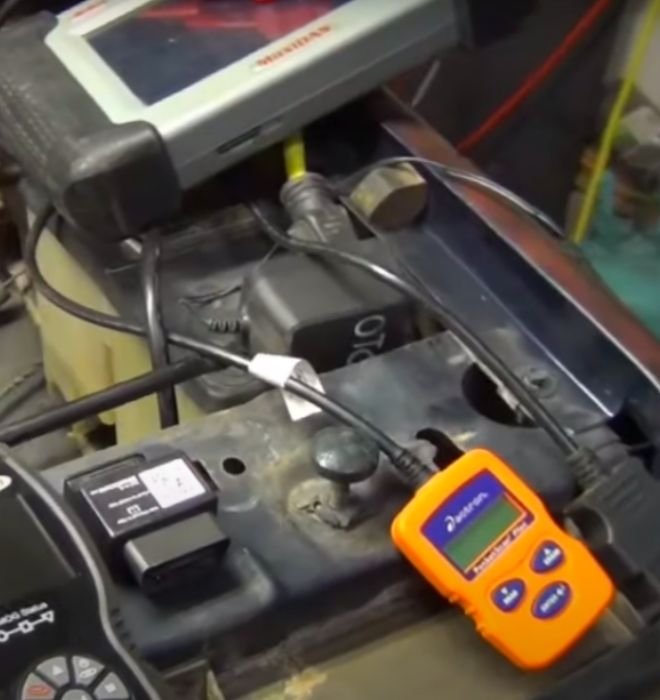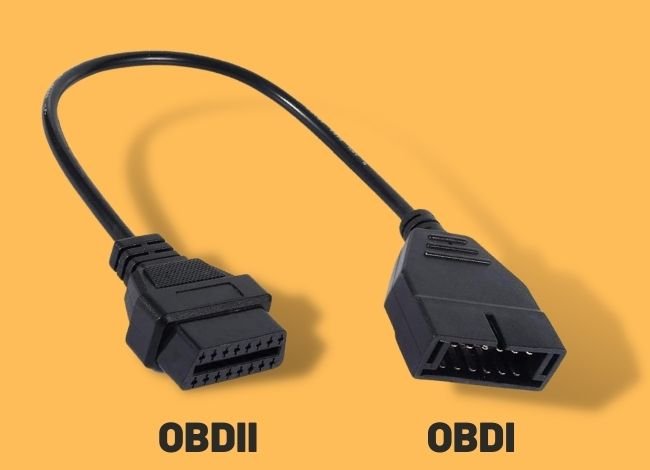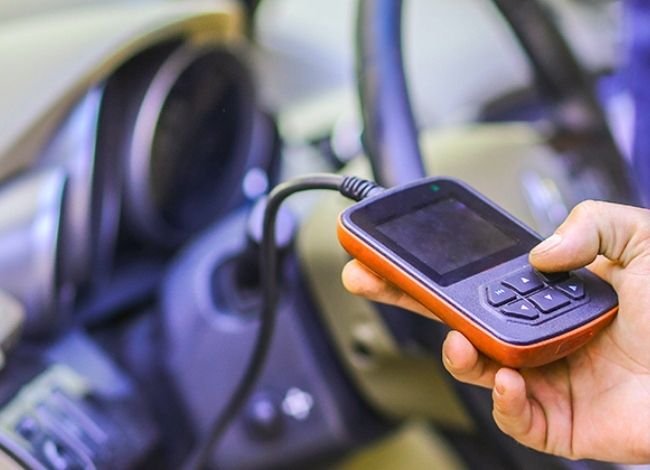Last Updated on May 11, 2025
In today’s fast-paced world, it’s hard to imagine a day without using a vehicle. Most people rely on cars for daily transportation to save time and increase convenience. But being behind the wheel also means taking responsibility for the vehicle’s health and your own safety. That’s where OBD2, or Onboard Diagnostics 2, plays a crucial role. This system helps you detect potential problems in your car before they become dangerous or expensive.
Whether you’re a driver, mechanic, or car enthusiast, understanding what OBD2 stands for and how it works can save you time, money, and stress. In this guide, we’ll walk you through everything you need to know about OBD2—from its origin and functionality to its importance in modern vehicles.
What Does OBD2 Stand For?
OBD2 stands for Onboard Diagnostics 2. It is the second generation of onboard diagnostic systems used in vehicles to monitor and report issues related to the engine and emissions system. The OBD2 system collects data from various sensors inside the vehicle, and if a problem is detected, it triggers a warning light on the dashboard—usually the “Check Engine” light.
This system was developed to standardize the way vehicles report issues, ensuring that mechanics and car owners can use a single scan tool to diagnose problems across different car models.
A Brief History of OBD Systems
The development of OBD systems dates back to the 1980s. Here’s how it evolved:
1. Early Development
The primary motivation for developing the OBD system was to reduce vehicle emissions and comply with environmental regulations like the Clean Air Act. The first OBD systems were proprietary and varied significantly from one manufacturer to another.
2. OBD1
Introduced in the early 1990s, OBD1 was the first step toward vehicle diagnostics. However, it had several limitations:
- Lack of standardization
- Limited diagnostic capabilities
- Difficult for independent mechanics to interpret codes
3. OBD2
In 1996, OBD2 became mandatory for all cars and light trucks sold in the U.S. It offered significant improvements, including:
- Universal connectors (DLC)
- Standardized diagnostic trouble codes (DTCs)
- Better sensor integration
- Enhanced accuracy in diagnosing engine problems
How Does OBD2 Work?
The OBD2 system consists of several key components that work together to monitor your car’s health. Here’s a breakdown of its main elements:
1. ECU (Electronic Control Unit)
The ECU is the brain of the car. It collects data from sensors throughout the vehicle and uses that data to control various engine functions. When something goes wrong, the ECU stores a diagnostic trouble code (DTC).
2. Sensors
These are located all over the car—from the engine and transmission to the exhaust and fuel systems. Sensors send real-time data to the ECU, helping it monitor things like oxygen levels, temperature, air flow, and fuel pressure.
3. Diagnostic Trouble Codes (DTCs)
When sensor data falls outside the normal range, the ECU logs it as a DTC. These alphanumeric codes indicate the nature and source of the problem. Some DTCs are universal across all makes and models, while others are manufacturer-specific.
4. Malfunction Indicator Light (MIL)
When a DTC is triggered, the ECU activates the MIL, commonly known as the “Check Engine” light. If the light stays on, the issue may be minor. If it blinks, it usually signals a severe problem requiring immediate attention.
5. Diagnostic Link Connector (DLC)
This is the physical port (usually located under the dashboard) where an OBD2 scanner plugs in. Mechanics or vehicle owners can connect a scan tool to this port to retrieve the DTCs and diagnose issues.
Types of OBD Scanners
OBD scanners have evolved over time. Here’s a quick comparison between OBD1 and OBD2:
OBD1 Scanners
- Proprietary and non-standardized
- Required different tools for different vehicles
- Limited to basic engine diagnostics
- Mainly used before 1996
OBD2 Scanners
- Standardized interface and protocols
- Can be used across all compliant vehicles
- Offers real-time data and a broader range of diagnostics
- Includes access to emission systems, fuel trim, and sensor performance
Benefits of Using an OBD2 Scanner
Using an OBD2 scanner offers multiple benefits:
1. Emission Control
OBD2 systems are designed to monitor components that affect emissions. They ensure your car runs clean, helping meet environmental standards and pass emissions tests.
2. Cost Savings
Identifying problems early can prevent expensive repairs down the line. OBD2 helps you catch small issues before they escalate.
3. Safety Enhancement
By alerting you to system malfunctions, OBD2 contributes to road safety. Driving with an undiagnosed issue can lead to breakdowns or accidents.
4. DIY Diagnostics
With a Bluetooth or handheld scanner, even non-mechanics can diagnose their vehicle at home. This saves time and money on unnecessary trips to the shop.
Commercial Applications of OBD2
While OBD2 was designed with personal vehicles in mind, its use has expanded into commercial and fleet management due to its many advantages.
1. Fleet Monitoring
Businesses use OBD2 systems to track:
- Fuel efficiency
- Driver behavior
- Vehicle location and diagnostics
- Maintenance schedules
2. Insurance Telematics
Some insurance companies use OBD2-based tracking to offer discounts based on driving habits. Safer driving means lower premiums.
3. Remote Diagnostics
Commercial vehicles equipped with advanced OBD2 systems can transmit fault data to remote servers, allowing technicians to diagnose problems without physically inspecting the vehicle.
4. Reduced Downtime
By identifying issues early, companies can schedule maintenance before breakdowns occur—keeping vehicles on the road longer.
Key Metrics Tracked by OBD2
Here are some examples of what OBD2 can monitor:
- Engine RPM
- Vehicle speed
- Fuel system status
- Long/short-term fuel trim
- Engine coolant temperature
- Oxygen sensor data
- Throttle position
These data points help in maintaining optimal vehicle performance.
How to Use an OBD2 Scanner
Using an OBD2 scanner is straightforward:
- Locate the DLC Port – Usually under the driver’s dashboard.
- Plug in the Scanner – Use a compatible OBD2 scan tool.
- Turn on the Ignition – Power on the vehicle (engine off or running as per scanner instruction).
- Read Codes – Follow the device menu to scan for trouble codes.
- Interpret the Codes – Use the scanner’s manual or an online database to understand what each code means.
- Take Action – Either fix the issue yourself or consult a professional.
Frequently Asked Questions (FAQs)
How do I know if my car supports OBD2?
If your car was manufactured in or after 1996 (in the U.S.), it likely supports OBD2. To confirm, check the emission label under the hood. It should mention “OBD II Certified.”
Is OBD2 mandatory in all vehicles?
Yes, OBD2 has been mandatory for all cars and light-duty trucks sold in the United States since 1996. Many countries have adopted similar regulations.
What should I do when the Check Engine light turns on?
First, don’t panic. Plug in an OBD2 scanner and check the diagnostic trouble code. If the light is steady, the issue might not be urgent. If it blinks, seek immediate professional help.
Can I use a smartphone to scan my car?
Absolutely. Many Bluetooth OBD2 devices connect to smartphone apps like Torque, OBDFusion, or Car Scanner to show real-time vehicle data and diagnostics.
Will an OBD2 scanner fix my car?
No, it won’t fix the problem directly. However, it provides valuable information that helps you or a mechanic diagnose and repair the issue efficiently.
Final Thoughts
So, what does OBD2 stand for? It stands for Onboard Diagnostics 2—a powerful vehicle monitoring system that plays a vital role in modern car maintenance. From detecting emissions problems to identifying engine faults and saving you from costly repairs, OBD2 is an indispensable tool for both individual car owners and commercial fleet operators.
Whether you’re a DIY car enthusiast or a professional technician, understanding OBD2 will help you take better care of your vehicle. So next time that Check Engine light turns on, you’ll know exactly what to do.
